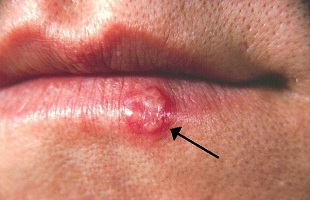A staggering 3.7 billion people around the world, or more than half of the population, have herpes according to the World Health Organization (WHO).
In a report published on Wednesday, WHO says that 67 per cent of people under the age of 50 are infected with the herpes simplex virus type 1 (HSV-1). The study was published in the journal PLOS ONE and is the WHO’s first global estimates of the HSV-1 infection. Herpes simplex virus is categorized into 2 types: herpes simplex virus type 1 (HSV-1) and herpes simplex virus type 2 (HSV-2). Both HSV-1 and HSV-2 are highly infectious and incurable.
HSV-1 is primarily transmitted by oral-oral contact and in most cases causes orolabial herpes or “cold sores” around the mouth. HSV-2 is almost entirely sexually transmitted through skin-to-skin contact, causing genital herpes.
Some 140 million people aged 15-49 years are infected with genital HSV-1 infection, primarily in the Americas, Europe and Western Pacific. Fewer people in high-income countries are becoming infected with HSV-1 as children, likely due to better hygiene and living conditions, and are instead at risk of contracting it genitally through oral sex after they become sexually active.
“Access to education and information on both types of herpes and sexually transmitted infections is critical to protect young people’s health before they become sexually active,” said Dr Marleen Temmerman, Director of WHO’s Department of Reproductive Health and Research.
In January, WHO estimated that 417 million people aged 15-49 years have HSV-2 infection, which causes genital herpes. Taken together, the estimates reveal that over half a billion people between the ages of 15-49 years have genital infection caused by either HSV-1 or HSV-2.
Herpes is a lifelong infection, which often has mild or no symptoms but can be detected by the presence of antibodies for HSV-1 or HSV-2 in the blood. It is difficult to determine the proportion of HSV-infected people worldwide who have symptomatic disease, as symptoms may be mild or simply not recognized as herpes. In the United States of America, about 15 per cent of people with HSV-2 infection report a prior diagnosis of genital herpes.
When genital herpes symptoms do occur, they take the form of one or more painful genital or anal blisters or ulcers. Herpes symptoms can be treated with antivirals, but after an initial episode, symptoms can recur. Recurrences of genital herpes due to HSV-1 are generally much less frequent than for HSV-2.
Transmission of HSV most often occurs without symptoms. The virus can have a significant negative impact upon an infected person’s mental wellness and personal relationships.
People with orolabial herpes symptoms may face social stigma, and can experience psychological distress as a result. In people with weak immune systems, such as those with advanced HIV infection, HSV-1 can have more severe symptoms and more frequent recurrences. Rarely, HSV-1 infection can also lead to more serious complications such as encephalitis or ocular disease.
















